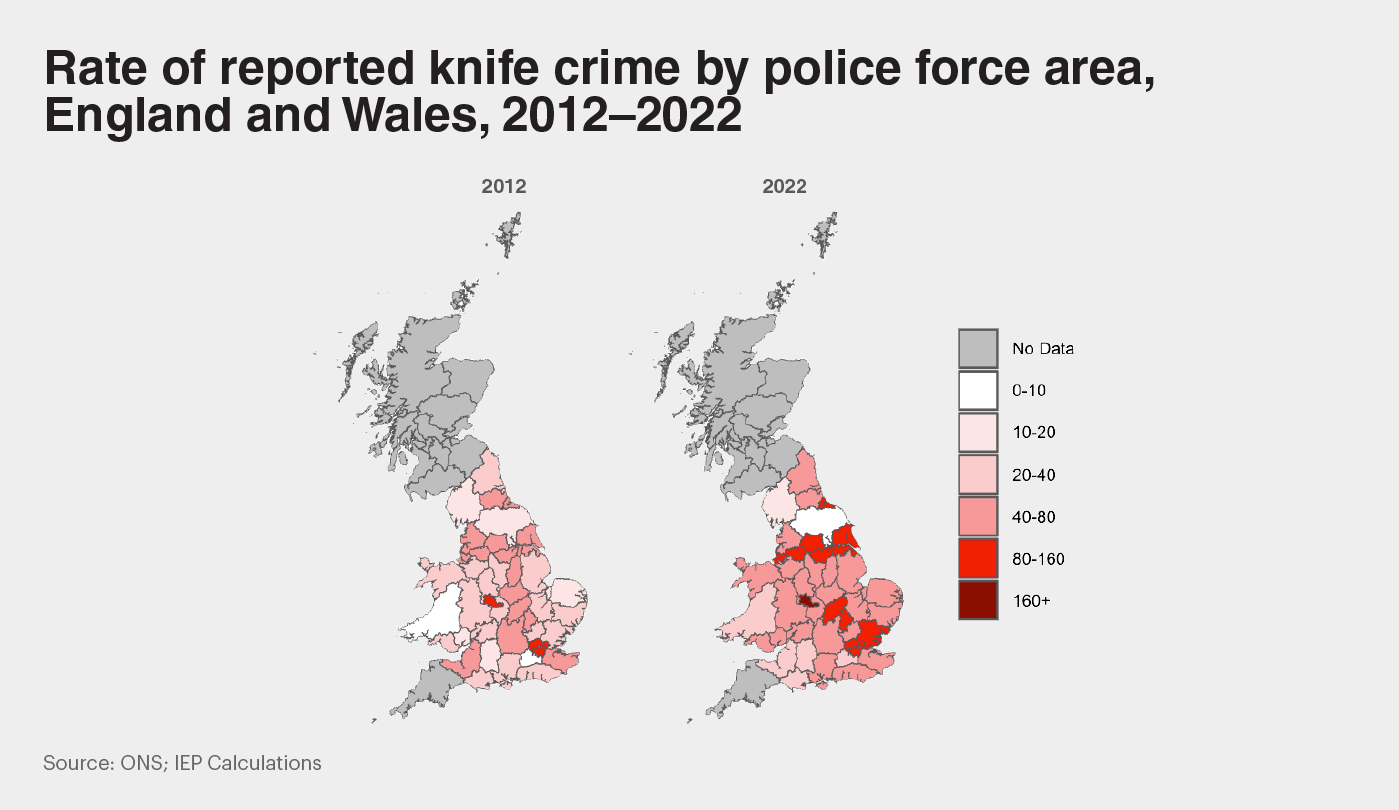In the aftermath, misinformation spread rapidly on social media platforms, falsely claiming the perpetrator was an immigrant. This inaccurate narrative fueled anti-immigrant sentiment and led to unrest across the country, including attacks on immigration facilities and places of worship.
The spread of false information and subsequent violence underscore the challenges currently facing the UK in maintaining social cohesion and public safety. These events occurred against a backdrop of broader trends in crime and peacefulness across the nation, as revealed in the recently released United Kingdom Peace Index (UKPI) for 2024.
According to the UKPI, the overall level of peacefulness in the UK has declined over the past decade. The index, which measures factors such as violent crime, homicide rates, and public disorder, shows that 2022 saw a significant deterioration in peacefulness, with 58 out of 66 Police Force Areas (PFAs) experiencing a decline. This marks the eighth deterioration in peacefulness in the last ten years and the first since 2020.

The UKPI report suggests that economic factors may be contributing to the decline in peacefulness. The UK has experienced six periods of decline in GDP per capita over the past decade, coinciding with significant increases in reported violent crime, weapons offenses, and public disorder incidents. The recent pandemic and the subsequent cost of living crisis are also cited as potential factors exacerbating crime rates.
Regional disparities in peacefulness are evident across the UK. In England and Wales, North Yorkshire is identified as the most peaceful PFA, while West Midlands is the least peaceful. Scotland’s Highlands and Islands region is the most peaceful area in that country, with Greater Glasgow being the least peaceful. In Northern Ireland, Fermanagh and Omagh lead in peacefulness, while Belfast City ranks as the least peaceful.
The report also notes a reduction in police officer numbers over the past decade, which may have impacted the ability to respond to and prevent crime effectively. This decrease in law enforcement resources, combined with reduced funding for youth services, is suggested as a possible factor contributing to increased antisocial behavior and crime rates among young people.

The recent unrest following the Southport incident demonstrates how quickly misinformation can spread and lead to real-world consequences. The UKPI findings provide context for understanding the broader trends in crime and social disorder that may contribute to such volatile situations. The rise in violent crime and weapons offenses, particularly among youth, points to underlying social issues that need addressing.
As the UK grapples with these challenges, the role of social media in spreading misinformation and inflaming tensions has come under scrutiny. The rapid dissemination of false narratives about the Southport attacker’s background highlights the need for more effective measures to combat online disinformation and its potential to incite violence.
The recent events and the UKPI findings underscore the complex interplay between crime, economic factors, social media, and public perceptions of safety. Addressing these interconnected challenges requires a comprehensive strategy that tackles economic inequalities, invests in youth services and education, strengthens community policing, and combats online misinformation. As the UK navigates these issues, open dialogue, accurate information dissemination, and community-focused initiatives will be essential in cultivating a more peaceful and unified society.
Download the UKPI report here.